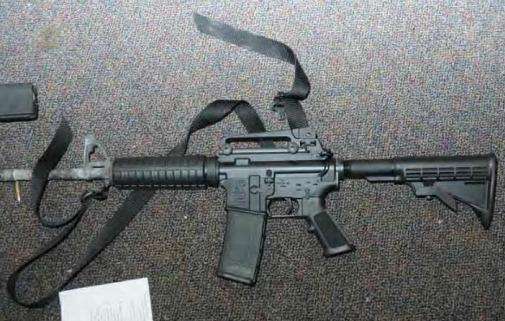Lawsuit Blames Gun Maker for Sandy Hook Massacre

The families of nine people murdered at Sandy Hook Elementary School in December 2012, plus a survivor of the massacre, are suing Bushmaster, the North Carolina company that made the semiautomatic rifle Adam Lanza used in the attack. The lawsuit also names as defendants the weapon's distributor and the East Windsor, Connecticut, gun store that sold it to Nancy Lanza, the killer's mother. Although none of these businesses broke any laws, the plaintiffs argue that they are guilty of "negligent entrustment" because they made a gun with no legitimate civilian uses available to the general public. Joshua Koskoff, an attorney representing the plaintiffs, told The Wall Street Journal "there is so much ample evidence of the inability of the civilian world to control these weapons that [it] is no longer reasonable to entrust them to [civilians]."
It is not clear exactly what Koskoff means by "these weapons." At the time of the massacre, the gun that Lanza used, a legally compliant version of the Bushmaster XM15-E2S rifle, was not considered an "assault weapon" under Connecticut law, which allowed rifles with detachable magazines and pistol grips as long as they did not have any of four other "military-style" features. After the massacre, the state legislature changed the law to ban that particular model by name, along with rifles that accept detachable magazines and have any of five features: 1) "a folding or telescoping stock," 2) "any grip of the weapon, including a pistol grip, thumbhole stock, or any other stock, the use of which would allow an individual to grip the weapon, resulting in any finger on the trigger hand in addition to the trigger finger being directly below any portion of the action of the weapon when firing," 3) "a forward pistol grip," 4) "a flash suppressor," or 5) "a grenade launcher or flare launcher."
In other words, Lanza's gun, which he took from his mother, was not an "assault weapon" when he used it to kill 20 children and six adults, but now it is. That fact highlights the point that "assault weapons" are whatever legislators say they are; the term has no meaning independent of legislative fiat. It therefore seems risky to assume that the guns arbitrarily placed in that category are uniquely suited to mass murder or uniquely inappropriate for legal uses. In this case, Koskoff and his associates are implausibly suggesting that a pistol grip was the difference between life and death for Lanza's victims.
That dubious claim is not the only problem with the lawsuit, which uses a negligent entrustment theory to dodge the Protection of Lawful Commerce in Arms Act, a 2005 law that was designed to block exactly this sort of litigation. The law, which is objectionable on federalist grounds but is nevertheless still in force, bans lawsuits against gun makers and sellers for damages "resulting from the criminal or unlawful misuse" of their products. It does include an exception for "an action brought against a seller for negligent entrustment." But in this case the plaintiffs are stretching that concept to cover an entire segment of the firearms industry, without regard to the individual characteristics of gun buyers or the seller's knowledge of those characteristics (except for the fact that they are neither soldiers nor police officers).
To give you a sense of how far-fetched that claim is, the Journal reports that Dennis Henigan, former director of the Legal Action Project at the Brady Center to Prevent Gun Violence, "said the lawsuit would test the limits of the negligent-entrustment legal theory." Henigan, a leading advocate of the litigation that provoked the Protection of Lawful Commerce in Arms Act, explained that "the issue in this case will be whether courts are willing to construe the doctrine of negligent entrustment so broadly as to encompass a theory of liability that is based on the sale of a particular gun to the general public instead of to a potentially particular dangerous individual."


Show Comments (246)